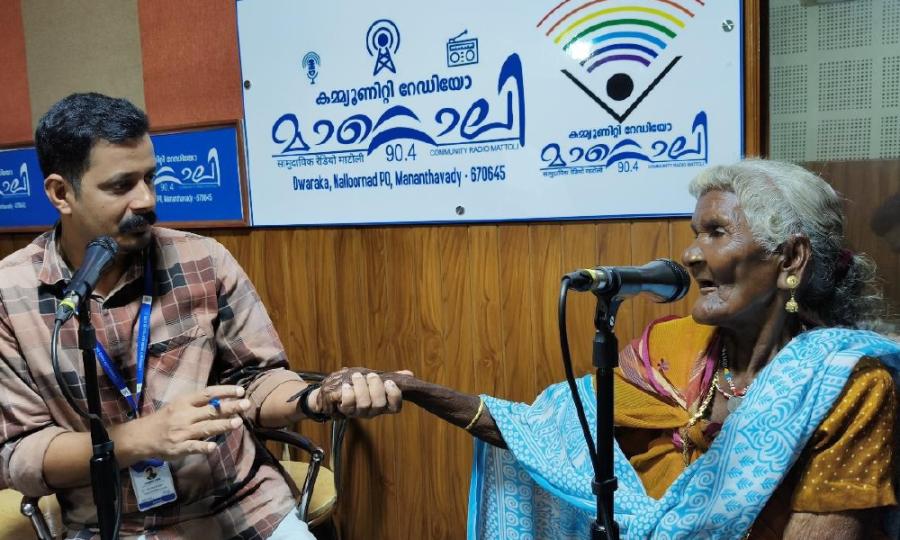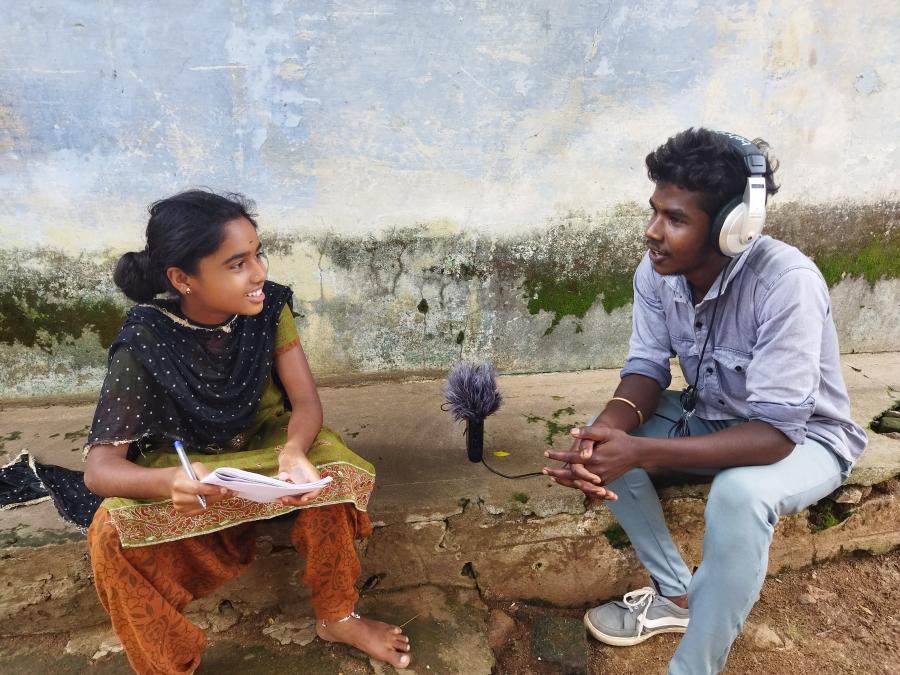British colonial expansion profoundly altered indigenous people's demographic structure, subsistence mode, and social organization not only in the Andaman archipelago but around the world. As colonialism forced indigenous people to transform from foraging to advanced hunting and gathering, to shifting or settled agriculture, some of the foraging communities completely lost their will to survive and now approach extinction. One such foraging society is the Onge, a group of about 100, one of the four Negrito hunter-gatherer groups in the Andaman Islands of India.
The first Onge contact with the British dates back to 1825, and includes the British punitive expedition, ending in 1867, that claimed many Onge lives. Finally, after continuous efforts and attempts to control the island, the British established "friendly" relations with the Onge in 1883. The British took interest in these islands for their rich forest resources, especially the timbers. This policy of exploitation continues today, as the government of India continues to extract forest resources. Deforestation poses many problems to the Onge in terms of demography, subsistence, ecology, and culture. They are a group that has undergone dramatic change, not only since their initial contact with "outsiders," but particularly after they were "resettled" in 1976.
Resettlement of the Onge
In the 1950s and early 1960s, while Little Andaman was inhabited by temporary residents (mostly government employees, numbering about 1,500), the government of India passed a resolution under the Special Area Development Program to resettle the refugee population from East Pakistan (now Bangladesh) to Little Andaman. Up until 1961, 3,281 refugee families received 4.07 hectares of forest land each. Between 1964 and 1973, Andaman administration cleared 51,400 hectares of lush green forests, out of which about 10,000 hectares was claimed in Little Andaman for settlement and cultivation.
Little Andaman was the most affected island ecologically during this rehabilitation process; its flat land made it ideal for 2,200 refugee and repatriate families - Bengalis from East Pakistan, Tamils from Sri Lanka, Moppilas from Kerala, Nicobarese from the Nicobar Islands, and Ranchi tribals from Bihar. Almost 9,000 hectares of coastal forest was cleared before 1969, and another 20,000 hectares was proposed for clearance in the early 1970s on the northern part of the settlers' village, near Onge territory.
In 1973 the Andaman and Nicobar Forest and Plantation Development Corporation (ANFPDC) established an intensive field station in Little Andaman to expedite the forest exploitation programs. To start, Andaman administrators encouraged private traders to extract timber under ANFPDC supervision. Little effort was made, however, to control illegal tree cutting. In 1975, the ANFPDC in Little Andaman launched a regeneration project called Red Oil Palm Plantation in an attempt to restock the cleared forests. So far 2,400 hectares of forest has been earmarked for this project, and the entire area has almost been regenerated with the red oil palm monocrop species.
Different development schemes in Little Andaman, including allocating land to settlers, planting monocrop species, constructing roads, and building government offices, private industries, a harbor, a subnaval base, an agriculture farm, and a helipad, have all added to the large-scale forest clearance. The Onge have been forced to move away from the outsiders' settlements into smaller pockets in the southern and northern parts of the island. In 1976 the Andaman administration set put on a deliberate scheme to "resettle" the Onge to an area in the island's northeastern corner known as Dugong Creek, providing them with mainstream amenities and coconut plantations.
This "resettlement" has set in motion the biological social, and cultural death of the One. Their natural forest resources have been reduced from 731 km to 110 km, creating a crisis in their subsistence pattern. Moreover, the government has engaged them as wage laborers on the coconut plantation, further hindering their traditional subsistence activities.
Deforestation
Exploiting rich forests in Andaman for timber and rehabilitating uprooted people often means encroaching onto the traditional resource base of the hunter-gatherer communities such as the Onge, Great Andamanese, Jarawa, Sentenelese (North Sentenel Island has not been explored due to Sentenelese hostility), and Shompen (a Mongoloid group inhabiting Great Nicobar Island). The implications of clearing and extracting timber from these islands in general and from Little Andaman in particular are not considered seriously enough by the government, either in terms of ecology or human suffering. Both public and private agencies are engaged in timber extraction, and commercial exploitation of timber species has shot up from four in 1952 to forty species today. Ninety-three wood-based industries are now operating in Andaman.
During 1984-1985 the timber extraction in these islands was 133, 942 cubic meters and the revenue earned by the Forest Department was 76 million rupees (US $5.7 million), the highest income ever made in a year. At present the timber extraction has stretched to 150,000 cubic meters. The major share contributed to this income was by Little Andaman forests in losing about 20,000 cubic meters of timber every year. On the other hand, a Government of India Report (1967), in considering the situation of Indian forests, recommends that "any programme of economic betterment of the tribals necessarily involves exploitation of forest resources with the tribal welfare angle and not with the sole object of maximum revenue for the State." Perhaps administrators and planners did not consider deforestation in these islands to be a major factor in ecological and human suffering.
In addition to the large-scale timber extraction and clearance of Little Andaman forests by government and other agencies, the settlers and the recent migrants, although they are allocated sufficient land, have begun illegally encroaching on the adjacent forest land because of Free Royalty on timber use and demand on land area. Unless the over-felling and illegal destruction of forests ceases in Little Andaman, the Onge, who depend on natural resources for nutrition, will face cute food shortages.
Resource Depletion
Little Andaman forests once were abundant with wild boars, roots, tubers, fruits, and honey, and the sea with fish, turtles, and dugongs. Depending on the season, the Onge have adapted their diet according to availability. The depletion and degradation of forests, however, has led to a sharp decline in the Onge's natural food resources, which in turn has led to malnutrition. Settlers - particularly the Bengali settlers - are increasingly hunting wild boars and other forest and sea resources.
As a result the Onge have to spend more hours covering a greater distance to hunt and gather; most of the time the men return without game. They have had to increase their dependence n marine resources, which once merely supplemented their land-based foods (Venkatesan 1989). The Onge are now entirely dependent on government doles, and their once primary hunter-gatherer subsistence has become secondary.
Population Decline
Many factors, related to the loss of their traditional resource base and the increase of outsiders, have led to the Onge's population decline. At present there are about 12,000 outsider settlers, both temporary and permanent, in Little Andaman - a population density of 16.42 people per square kilometer, as compared to 2.05 people during the 1950s and early 1960s.
The per capita area available o the Onge before resettlement was 4.67 km; up to 1987 the per capita area available for foraging was 1.1 km. Now this area has been further reduced, given "concession" to exploit the per capita area of 0.5 hectares for their subsistence. Although the Onge are unaware of this restricted provision on utilizing their natural resources, they realize that their land rights are being grabbed just by examining their natural food procurement.
Various anthropologists studying Onge population decline in the last few decades have emphasized the diseases introduced by outsiders. Other factors, too, contribute to such a decline. A study conducted by Swaminathan et al. (Whitaker 1985) showed that the Onge infant and child mortality was 40 percent, and 42.1 percent of the women were sterile. The infant mortality rate for 1985 was double that of 1978, and is very high when compared to the Indian infant mortality rate in rural areas. Only one out of three deaths recorded between 1977 and 1988 was of someone above 35 years of age, most deaths are from diarrhea, dysentery, and malnutrition. The high levels of sterility among Onge women and of infant mortality in the last two decades reveal a bleak future for the Onge.
Due to the resettlement resulting from deforestation, the Onge have taken on many of the cultural traits of outsides, including drinking alcohol, which was recently introduced by two Onge boys who were recruited into the local police force. The food supplied to the Onge plays a significant role in intestinal diseases, diarrhea, and dysentery. The Onge are now motivated by a cash economy, which can provide only short-term satisfaction.
A Matter of Survival
Various developmental programs implemented among the Onge have failed drastically, no doubt due to ethnocentrism. Replacing the once-abundant Onge traditional food with modern food doles is not going to provide always depended and survived on natural nutrient energy intake. Their protein intake has been reduced enormously. One acre of forest land has been turned into a vegetable garden, but the Onge never utilize the yield; instead, it fulfills the needs of the non-Onge families in the settlement. Intensive horticulture could be initiated in the Onge settlement, giving more emphasis to vegetable growth to counter the protein deficiency.
Although the Onge fish daily in the shallow ocean waters near the settlement, their catch is not encouraging. Between October and December the yield is quite reasonable; however the marine resource are being exploited by those settlers who use advanced fishing techniques. The Onge could be trained in twally net fishing, which would at least provide them with sufficient protein intake as long as they avoid commercial fishing.
An overall perspective of the Onge's life-threatening situation must be incorporated into all development programs. Administrators and planners must be made aware of the cognitive view of the Onge before imposing an inappropriate lifestyle on them.
Extending a road to Dugong Creek; settlers exploiting wild boars, honey, fish, and turtles in the "Onge Reserve"; proposed forest clearance of 20,000 hectares toward Onge territory for non-Onge settlers; keeping the Onge as "museum pieces" for VIPs' visits; exploiting the Onge economically and encouraging them to involve themselves in more cash income based on illegal dealings - all these activities should cease immediately. Unless the administrators, planners, and social, scientists take the current situation seriously, the Onge will face a crisis of survival in a very few years.
References
Bose, S.
1964 Economy of the Onge of Little Andaman. Man in India, vol. 44:298-310.
Government of India
1967 Report of the Committee on Tribal Economy in Forest Areas. New Delhi: Department of Social Welfare.
1989 Andaman, Nicobar and Lakshadweep: An Environmental Impact Assessment. New Delhi: Oxford & IBH.
Venkatesan, D.
1989 The Island Foragers: Ecology, Subsistence and Social Organization of Onge. Ph.D. diss, University of Madras, Department of Anthropology.
Whitaker, R.
1985 Endangered Andamans. New Delhi: Environmental Service Group, World Wildlife Fund-India and MAB-India, Department of Environment.
How You Can Help
Unless immediate attention is focused on the Onge struggle for existence, they will face cultural and biological extinction in a few years. The author strongly appeals to academics and intellectuals to protect the cultural life and physical existence of this endangered human population.
Those who can express their concern:
Dr. Antony Good, Associate Professor
Department of Social Anthropology
University of Edinburgh
Edinburgh, EH8 9LL, Scotland
Dr. Geoffrey Burkhart, Associate Professor
Department of Anthropology
College of Arts and Science
The American University
Washington, DC 20016
Dr. V. Sudarsen, Reader
Department of Anthropology
University of Madras
Madras 600 005, India
Dr. G. Prakash Reddy, Professor
Department of Social Anthropology
S.V. University
Tirupathi, Andhra Pradesh, India
Dr. Romolus Whitaker
Madras Crocodile Bank
Mamallapuram, Madras, India
Article copyright Cultural Survival, Inc.



